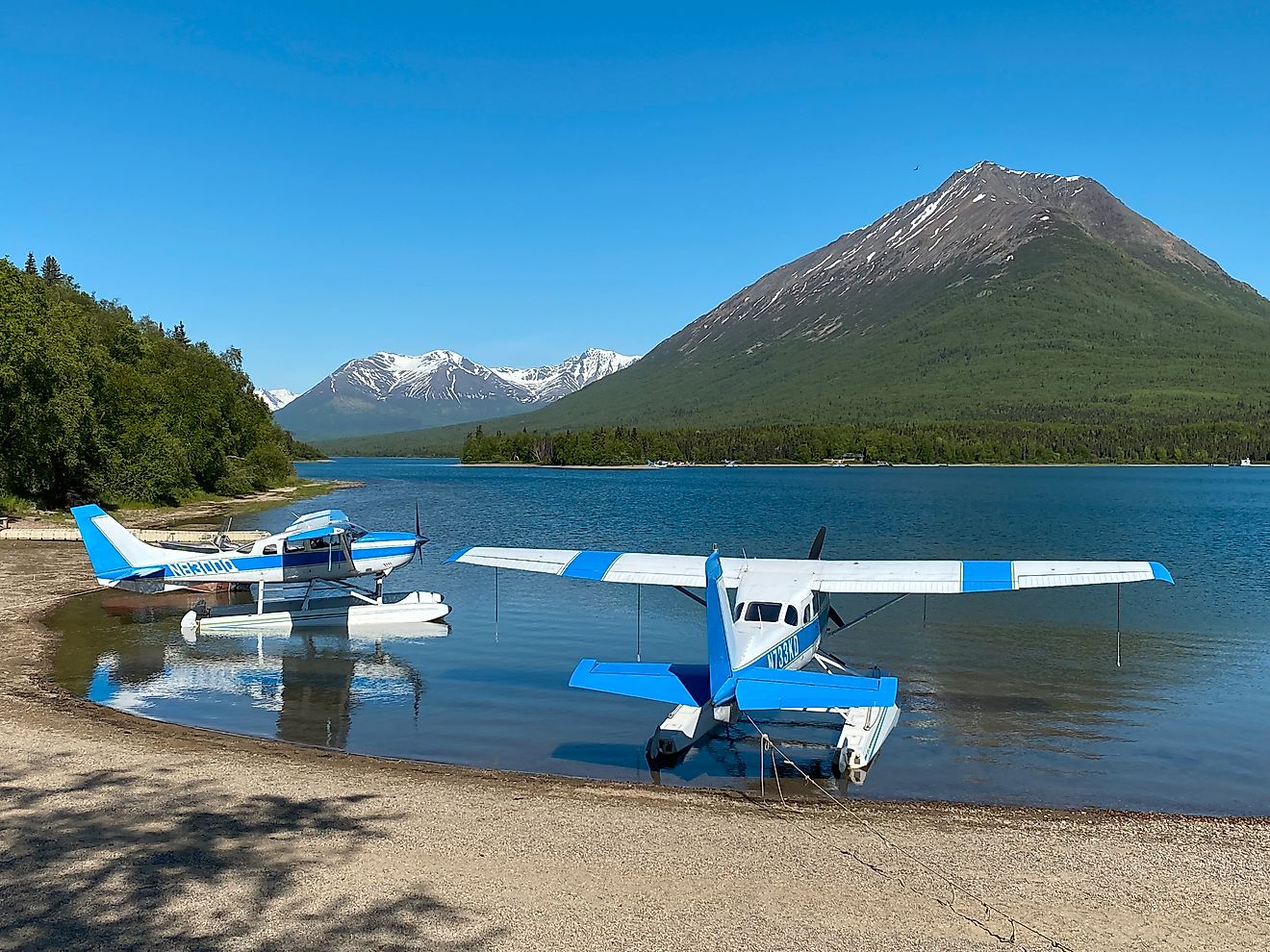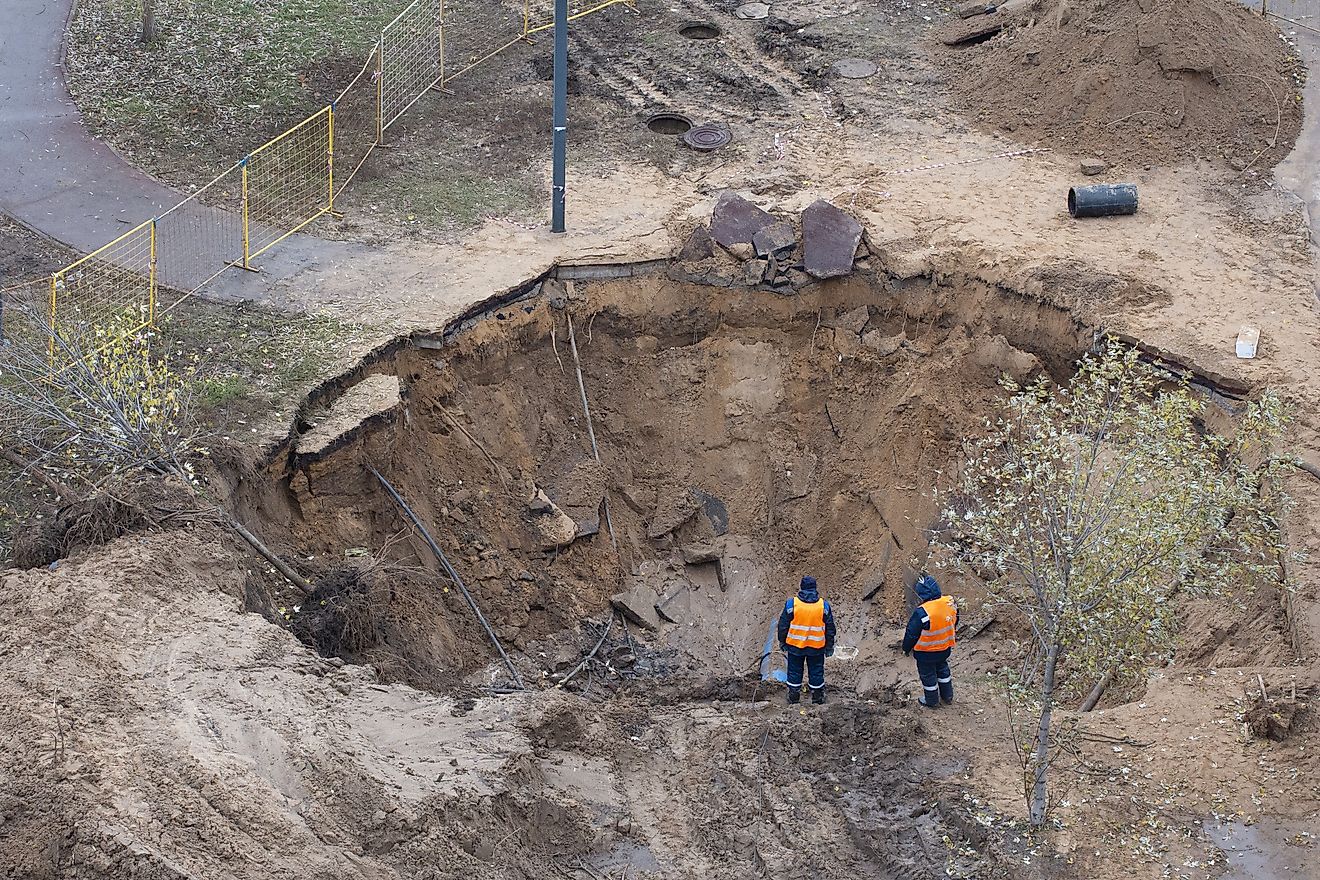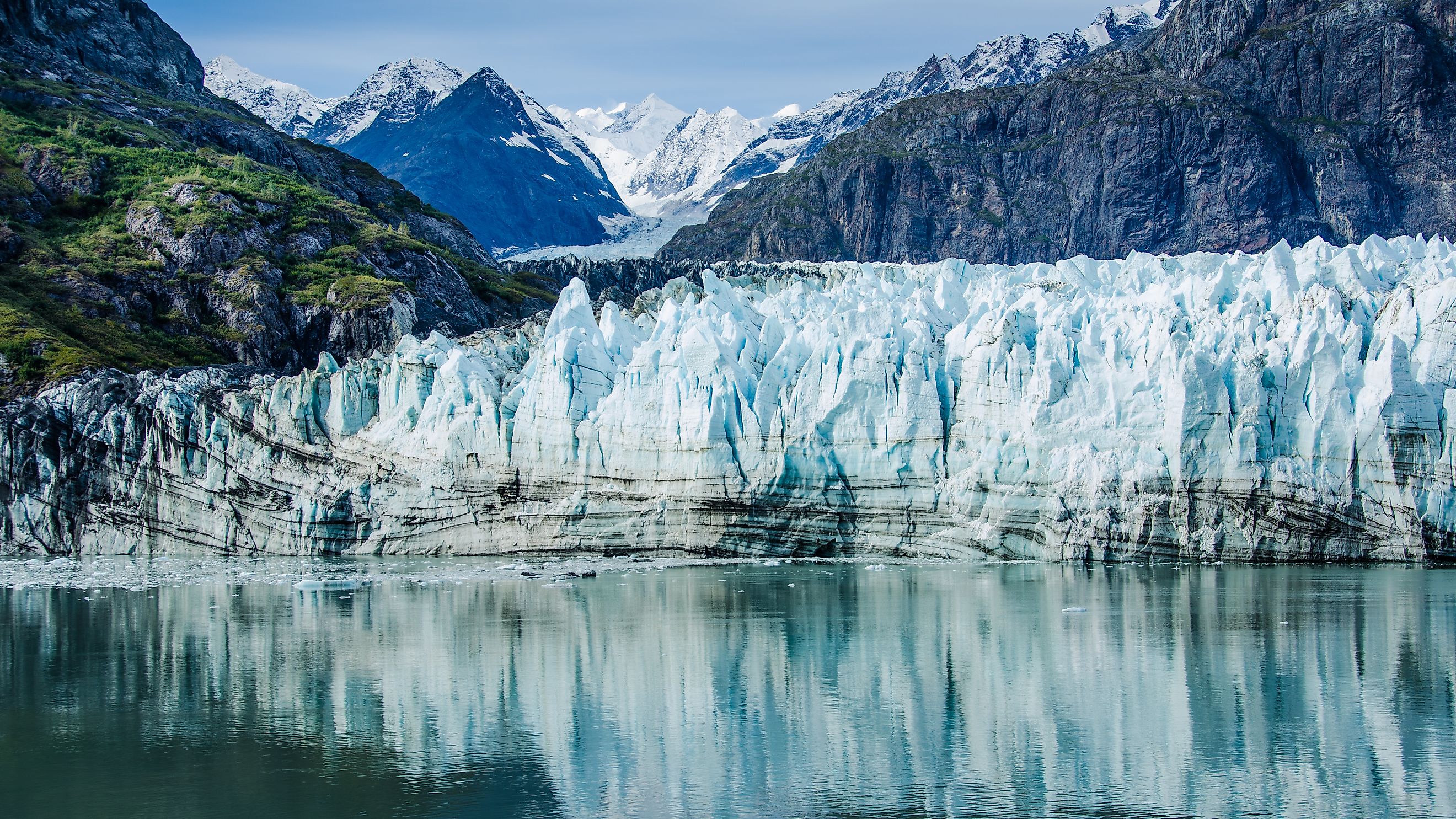
Glacier Bay National Park and Preserve
In southeastern Alaska, where massive mountains rise straight from the sea and glaciers shape the landscape, Glacier Bay National Park and Preserve offers one of the most dramatic natural settings in the United States. This remote park is known for its towering tidewater glaciers, icy fjords, and thriving wildlife. It is a place where visitors can watch icebergs crash into the ocean, spot whales breaching in frigid waters, and hike through forests that are slowly reclaiming land once covered by ice.
Covering more than 5,100 square miles, Glacier Bay is not only a national park, but also a UNESCO World Heritage Site and part of the largest internationally protected wilderness on Earth. It’s a destination where nature is always changing. Glaciers retreat and advance. Forests grow where ice once ruled. And every visit offers a front-row seat to the power of natural forces still shaping the land.
Whether you arrive by cruise ship, kayak, or small plane, Glacier Bay offers a rare and unforgettable experience where ice, water, wildlife, and mountains meet.
A Landscape Carved by Ice
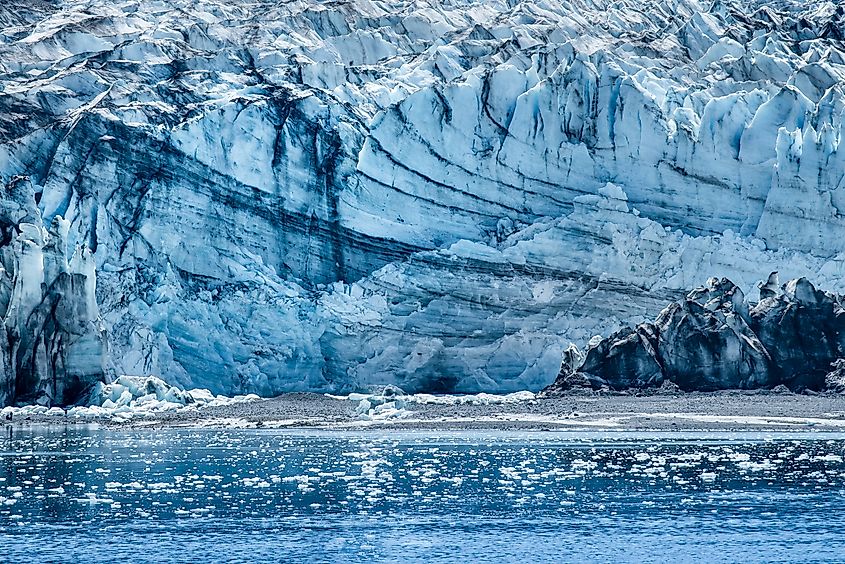
Glacier Bay was not always a navigable body of water. As recently as the late 1700s, the entire bay was filled with ice. The Grand Pacific Glacier, more than 4,000 feet thick and 20 miles wide, extended all the way to what is now Icy Strait. Over the last two centuries, that massive wall of ice retreated dramatically, leaving behind a 65-mile-long fjord system and more than 50 named glaciers.
Of those, 11 are tidewater glaciers, which means their faces end at the sea, where they shed massive icebergs in a process called calving. These are not static walls of ice. They surge, grind, split, and roar as they reshape the landscape. It is common to witness blocks of ice towering up to 200 feet high break off and crash into the bay, creating waves that echo across the water.
The Margerie Glacier, a prime destination for cruise ships, is one of the most active. It advances more than a dozen feet per day and calves regularly. Just across the water sits the Grand Pacific Glacier, now covered in a thick layer of rocky moraine. Though less dramatic visually, it represents a powerful reminder of the bay’s icy past.
A Park Like No Other

Glacier Bay National Park and Preserve was proclaimed a national monument in 1925, became a national park in 1980, and was designated a UNESCO World Heritage Site in 1992. It shares this designation with Wrangell–St. Elias National Park and Preserve in Alaska and Tatshenshini-Alsek Provincial Park in British Columbia. Together, they form the largest internationally protected wilderness in the world, spanning 24 million acres.
The park itself stretches from the mouth of Glacier Bay to the rugged Mount Fairweather, which at 15,300 feet is the highest peak in southeastern Alaska. Its territory also includes the US portion of the Alsek River and the forested slopes that climb above the fjords. This combination of alpine tundra, glaciated peaks, rainforests, and marine habitats creates an environment rich in biodiversity.
Glacier Bay is divided into two major arms: the East Arm and the West Arm. Most visitors head up the West Arm, toward Margerie and Johns Hopkins Glaciers. Access to the East Arm is more limited, making it a quieter place for sea kayakers, private yachts, and those seeking more solitude.
Wildlife and Wilderness
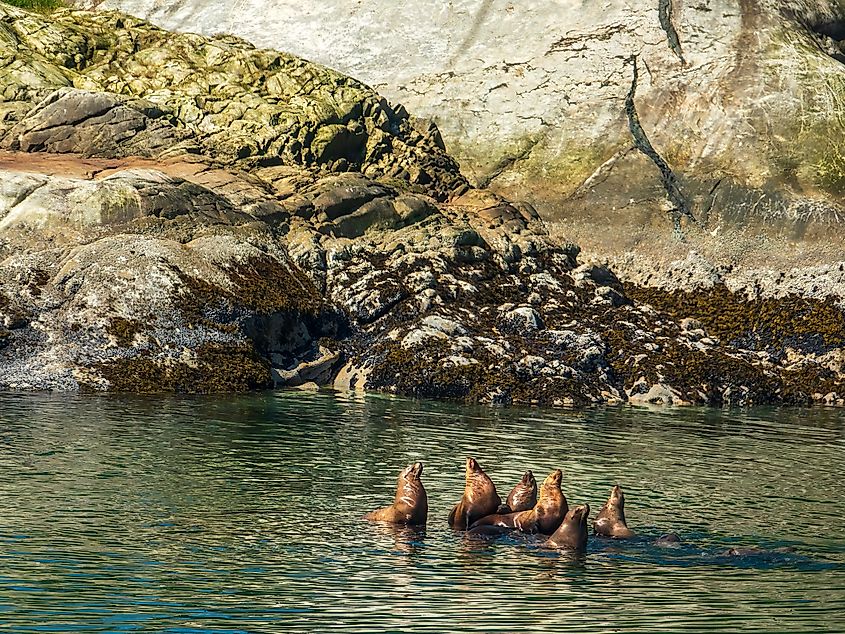
This Alaskan park is a stronghold for wildlife. Its remote setting and protections have allowed a wide range of species to thrive. Visitors may spot brown bears, black bears, moose, mountain goats, and wolves on land. In the water, humpback whales, Steller sea lions, and harbor seals are often seen, especially near the icebergs where seals haul out to rest or give birth.
The skies are alive with bald eagles, puffins, and more than 200 bird species, including the once-endangered American peregrine falcon and the threatened spectacled eider. In spring and summer, meadows burst with wildflowers while mosses, lichens, and shrubs recolonize terrain recently freed from glacial cover.
This visible return of plant life is one of the park’s most fascinating natural stories. Known as plant succession, it charts the slow but steady transformation of barren rock into vibrant ecosystems. Nowhere is this process more observable than in Glacier Bay. Within just a few miles, visitors can move from freshly exposed land to old-growth rainforest.
The coastline hosts Sitka spruce, western hemlock, and red alder, while higher elevations offer alpine tundra rich with dwarf shrubs, mosses, and seasonal snow.
The Science of a Changing Climate

Glacier Bay is more than a sightseeing destination. It is a global research site for scientists studying glaciology, climate change, marine ecosystems, and ecological succession. With its history of glacial advance and retreat recorded in geological layers and vegetation patterns, the park serves as a real-time laboratory.
Researchers track the speed and volume of glacier retreat, monitor shifts in marine life due to changing salinity and temperature, and document new species returning to areas that were once lifeless. Some glaciers in the park are still advancing, while others have pulled back rapidly in recent decades, mirroring the broader trends of melting ice around the world.
This landscape tells the story of Earth’s climate across centuries. It offers powerful, visual evidence of change and resilience, reminding visitors and scientists alike of the delicate balance between ice, water, land, and life.
Getting There and Getting Around
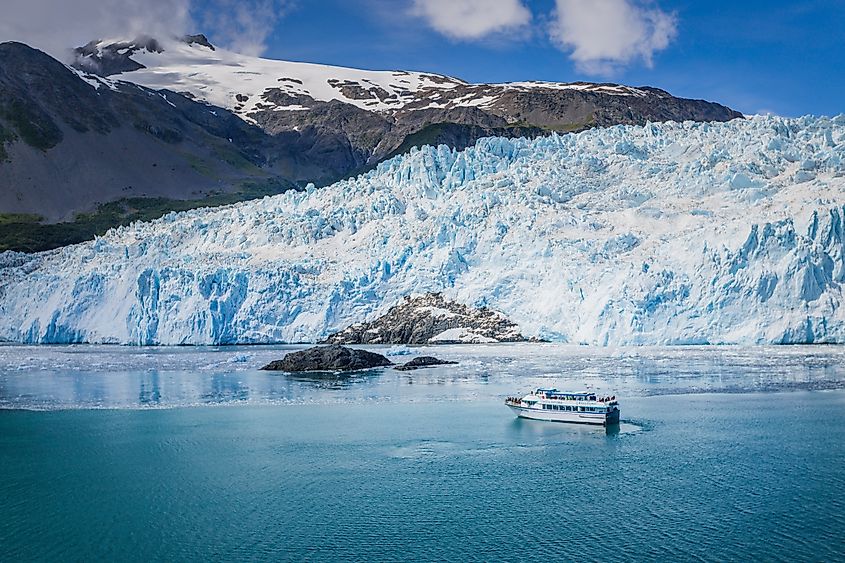
The remote location of Glacier Bay means that most visitors arrive by cruise ship, typically embarking from Juneau or other ports along the Inside Passage. Cruise itineraries often include a full day in the park, with rangers boarding the ships to offer narration and insights about the glaciers, geology, and wildlife.
While cruise ships offer the most popular and convenient way to experience the park, more adventurous travelers can opt for small ship cruises, sea kayaking tours, or private yacht charters. Companies like UnCruise Adventures and Alaska Yacht Charters provide closer access to the park’s quieter corners and smaller inlets.
For those who prefer to explore on foot or by paddle, the community of Gustavus, near the park’s headquarters, serves as the main gateway. From there, visitors can access the Bartlett Cove Visitor Center, hike local trails, join ranger programs, or launch kayaking trips.
Backcountry camping is allowed with permits, and although facilities are minimal, the experience offers unmatched intimacy with the environment.
Glacier Bay National Park at a Glance
| Feature | Details |
|---|---|
| Size | 5,129 square miles (13,287 km²) |
| Location | Southeastern Alaska, Gulf of Alaska |
| Established | National Monument (1925), Park (1980) |
| World Heritage Site | Since 1992 |
| Highest Peak | Mount Fairweather (15,300 feet) |
| Number of Named Glaciers | Over 50 |
| Tidewater Glaciers | 11 (including Margerie, Johns Hopkins) |
| Main Visitor Entry Point | Gustavus and Bartlett Cove |
| Annual Visitors | Up to 400,000 |
| Wildlife | Bears, whales, seals, moose, 200+ birds |
| Main Access | Cruise ship, small boat, kayak, plane |
Frequently Asked Questions
Is Glacier Bay worth visiting without a cruise ship?
Yes. While cruises are the most common way to visit, you can fly into Gustavus and explore the park by kayak, hiking, or small boat. This allows for a deeper and more intimate experience.
How cold is it in Glacier Bay?
Temperatures vary depending on the season. Summer highs are typically between 50 and 65°F. Glacier-adjacent areas tend to be cooler, especially when near ice flows.
When is the best time to visit Glacier Bay?
Late May through early September is considered the best time. During these months, most glaciers are accessible, wildlife is active, and visitor services are available.
Are the glaciers still retreating?
Yes, though the rate varies. Some glaciers are stable or advancing, while others are receding rapidly due to climate change. Scientists continually monitor their movement.
What kind of animals will I see in Glacier Bay?
You may encounter sea otters, humpback whales, orcas, harbor seals, brown and black bears, mountain goats, bald eagles, and dozens of seabird species.




